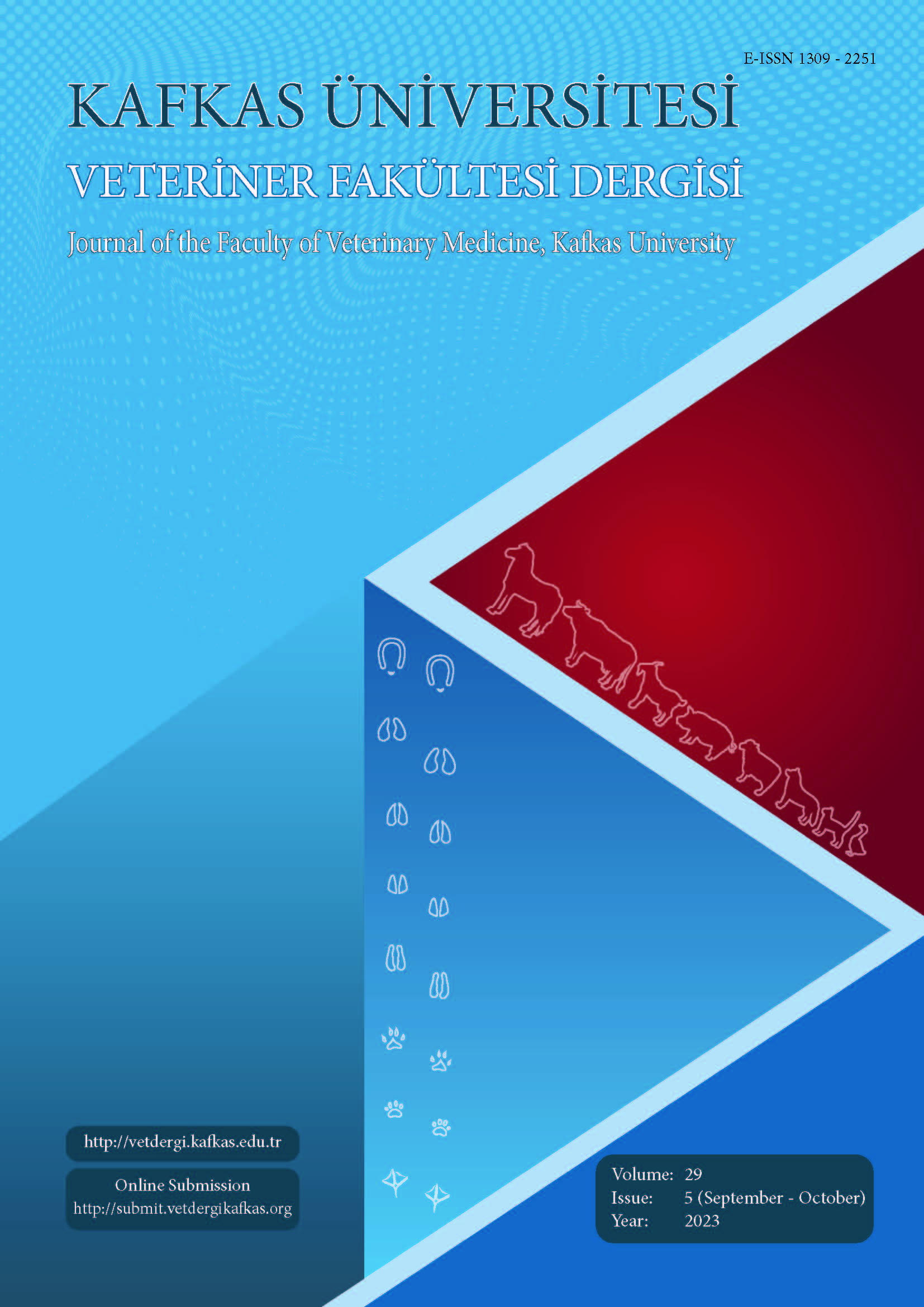
This journal is licensed under a Creative Commons Attribution-NonCommercial 4.0 International License
Kafkas Üniversitesi Veteriner Fakültesi Dergisi
2023 , Vol 29 , Issue 5
The Comparison of Polymorphisms in the Heat Shock Transcription Factor 1 Gene of Turkish Grey Cattle and Holstein Cattle
1Tekirdağ Namık Kemal University, Central Research Laboratory (NABILTEM), TR-59000 Tekirdağ - TÜRKİYE2Trakya University, Faculty of Engineering, Department of Genetics and Bioengineering, TR-22030 Edirne - TÜRKİYE DOI : 10.9775/kvfd.2023.29256 Turkish Grey cattle (B. taurus) are the only native cattle breed of Türkiye"s Thrace and Western Anatolia regions. They can spend the whole year as free herds, including the hottest and coldest months, and can survive, feed, and reproduce without any human intervention. Therefore, Turkish Grey cattle are of interest for genetic marker studies on heat stress tolerance. This study was aimed to identify genetic polymorphism in the DNA binding domain (DBD) encoding region of the heat shock transcription factor 1 (HSF1) gene in Holstein (n: 50) and Turkish Grey (n: 50) cattle. It was determined that the 121 amino acid long sequence encoded by the first three exons of the HSF1 gene was the same in Turkish Grey and Holstein cattle. Two intronic and one synonymous SNPs were identified in Turkish Grey (rs719296338, rs522980029, rs17880386) and one inronic SNP (rs17870386) in Holstein cattle by DNA sequencing. These SNPs were searched in the Bovine Genome Variation Database (BGVD). Interestingly, according to BGVD, rs522980029 was conserved in B. indicus but absent in B. taurus. Moreover, the rs719296338 locus is monomorphic in western European and Eurasian taurine but is polymorphic in East Asian taurines and B. indicus. The results support the view that B. indicus is genetic introgression into B. taurus cattle in Anatolia. This hybridization may have contributed to Turkish Grey cattle ability to adapt to harsh environmental conditions and heat stress. Keywords : Genetic introgression, Grey Cattle, Heat stress










